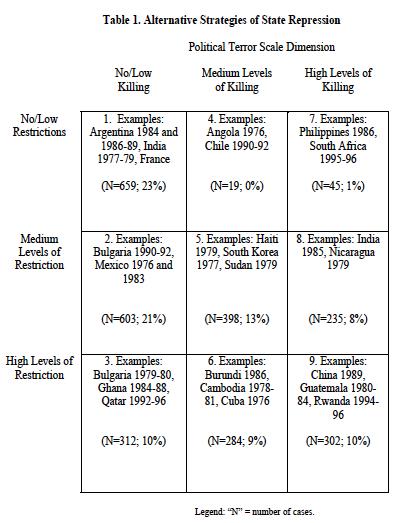Post developed by Katie Brown in coordination with Christian Davenport (@engagedscholar).
On June 13, 2013, news of the political terror in Syria reached a breaking point. Under President Bashar al-Assad, 92,000 Syrians have been killed. Recent evidence suggests the use of chemical warfare, including sarin gas. Though the civil war has festered for years now, the global community is only beginning to respond. In the wake of this new information, the White House ordered aid to select rebels. On June 18, 2013, the G8 summit supported urgent peace talks in Geneva with Syria. Regardless of how the world’s super powers intervene, the violence is staggering. How can we understand such repressive strategies?
Center for Political Studies researcher Christian Davenport’s work on violent dissent offers insight into Syria’s present state. Davenport’s research uses the Political Terror Scale to operationalize physical torture and elimination of citizens. Both Amnesty International and the U.S. State Department rate Syria at the highest end of this scale, with a 5, defined as: “terror has expanded to the whole population. The leaders of these societies place no limits on the means or thoroughness with which they pursue personal or ideological goals.”
 Davenport creates a conceptualization that goes one step further. The resulting grid plots level of restriction against level of killing. Syria rates high on both accounts, making the current situation comparable to other notorious times and places: China in 1989, Guatemala in 1980, and Rwanda from 1994-1996.
Davenport creates a conceptualization that goes one step further. The resulting grid plots level of restriction against level of killing. Syria rates high on both accounts, making the current situation comparable to other notorious times and places: China in 1989, Guatemala in 1980, and Rwanda from 1994-1996.
Davenport’s research emphasizes the dire nature of the situation in Syria. We have little insight into how such activities are ended (something that is sorely needed), but one thing that we do know is that within such situations political leaders are not as sensitive to external policies that under normal circumstances would seem quite costly.

